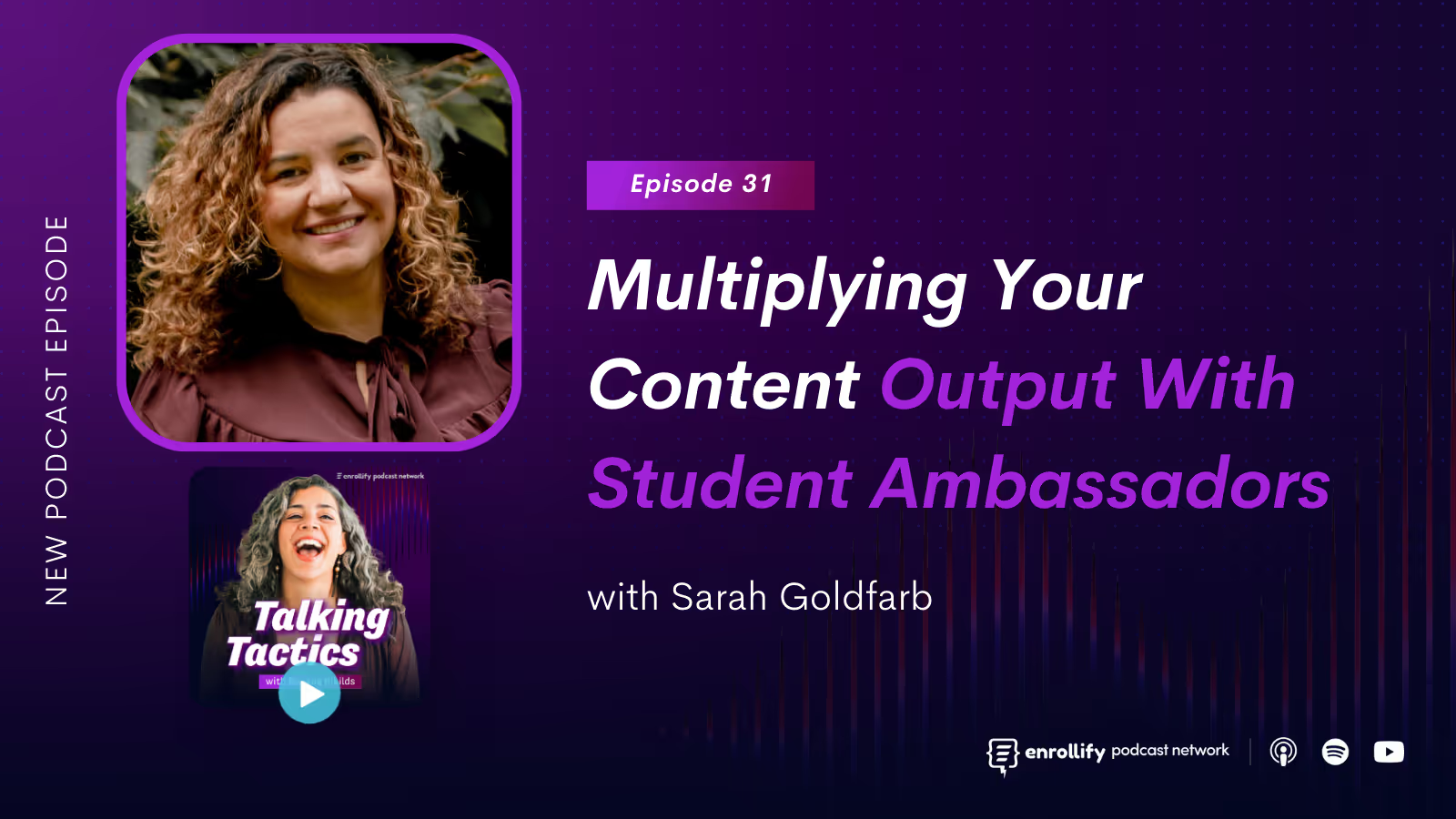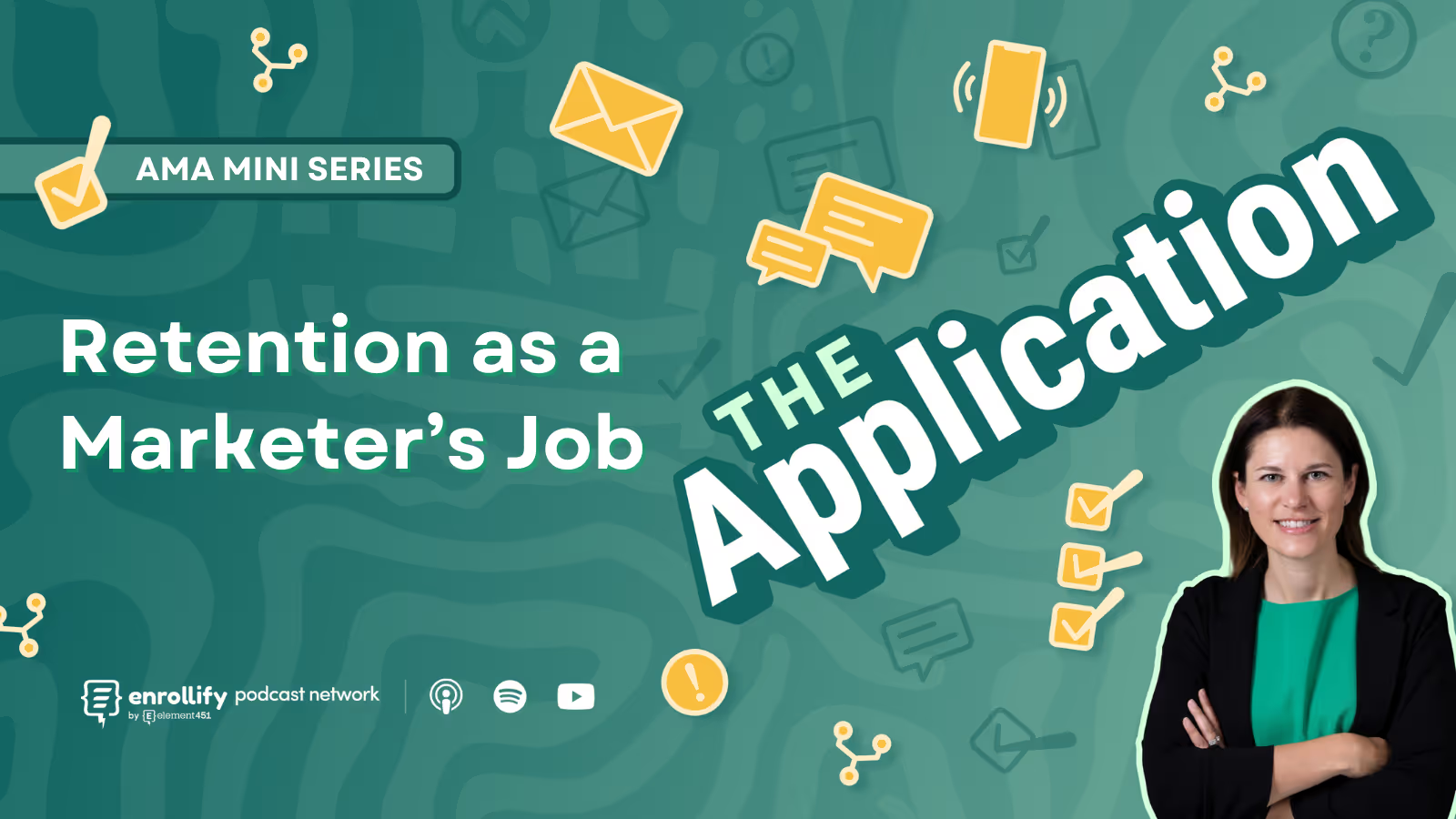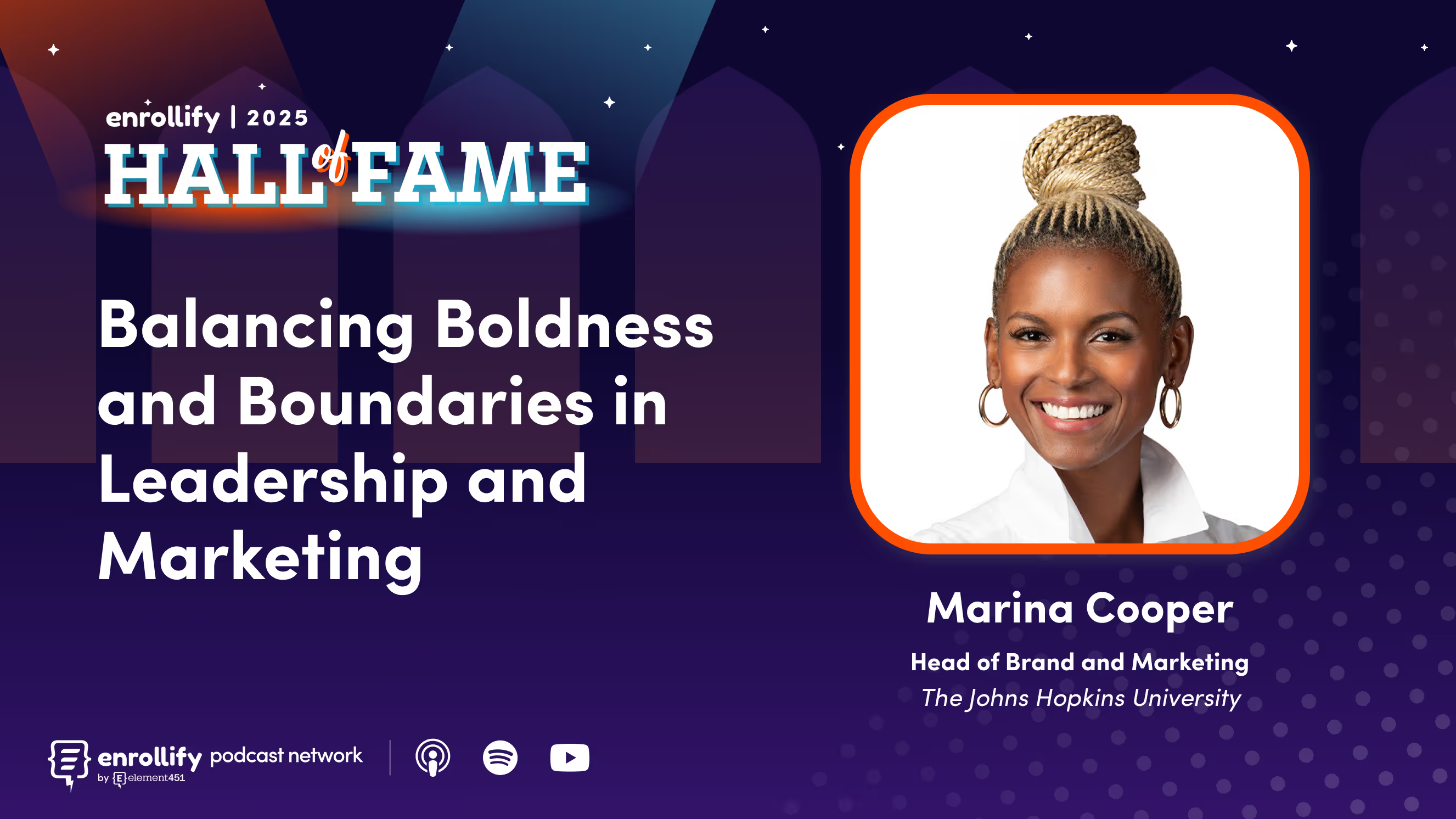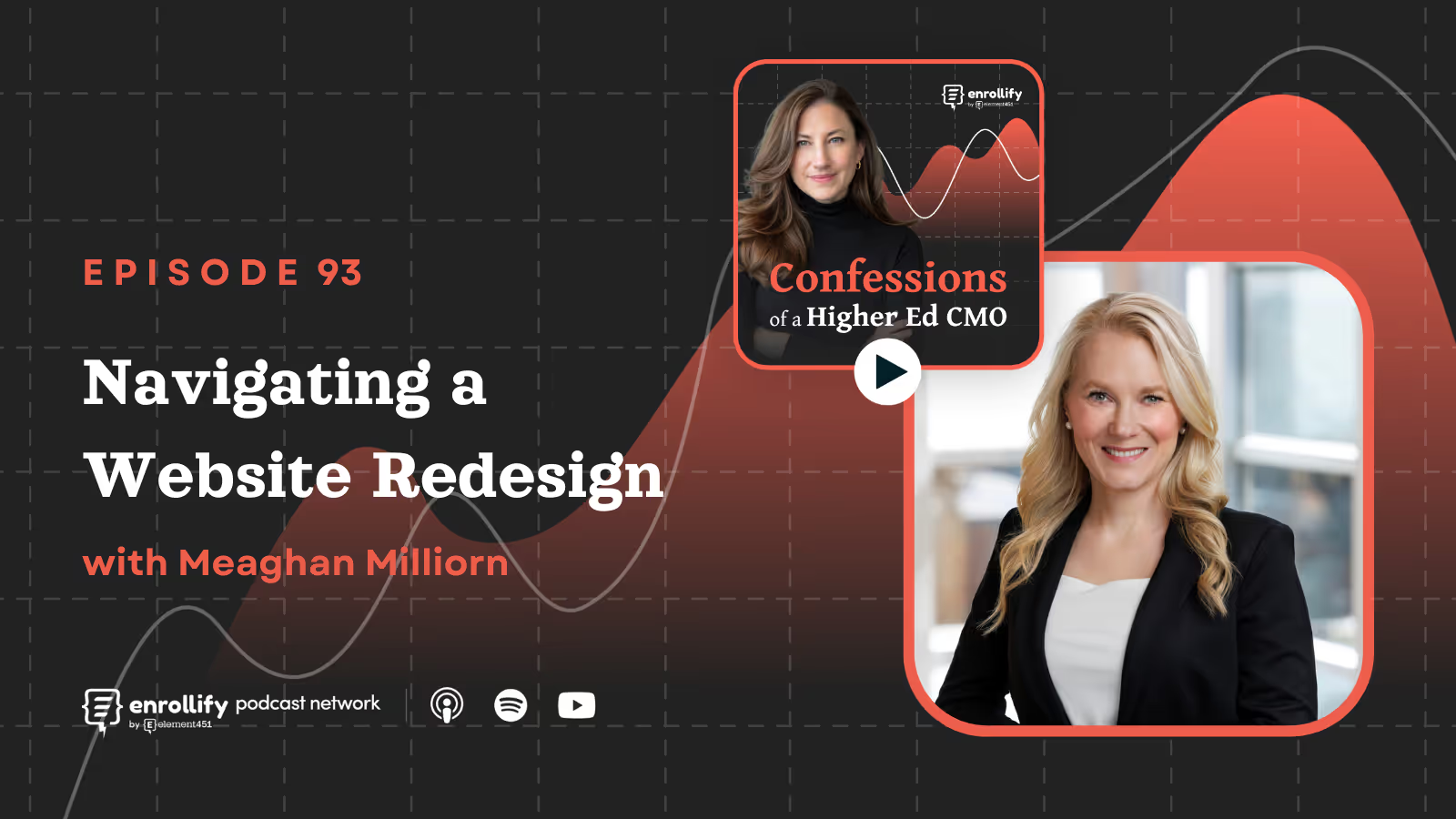About the Episode
About the Episode: Keeping your social media accounts active and engaging is challenging, particularly for small colleges or teams. Sarah’s student ambassador approach (giving ambassador separate accounts connected to your college’s account) can significantly boost your content output and engagement. Schools working with Sarah have seen their student ambassador posts outperform all others, and gain the algorithm benefits of video views rising from almost nothing.
Check out the ambassador program in action at:
Key Takeaways
- Identify Suitable Ambassadors: Choose students who are creative, enthusiastic about the institution, and comfortable with social media.
- Create Separate Institutional Accounts for Ambassadors: Assign each ambassador an official account to post freely and authentically without concerns of blending personal and academic life.
- Provide Structure and Incentives: Set posting expectations and incentivize ambassadors with compensation, experiences, or even academic credits.
- Develop a Supportive Community: Use group chats and regular check-ins to foster a collaborative ambassador environment and keep content flowing consistently.
- Track and Celebrate Results: Ambassador-led content can significantly boost engagement, especially through video formats like Reels, which align with platform algorithms.
Episode Summary
Why Do Schools Need Social Media Ambassadors?
Social media ambassadors offer a unique solution for schools, especially smaller ones, that struggle with creating consistent, authentic content. Goldfarb explains that smaller institutions often have limited resources, which hinders their ability to generate user-generated content naturally. By empowering students to act as ambassadors, schools can develop engaging, authentic narratives that resonate with prospective students. Smaller schools benefit particularly because ambassadors can organically boost the institution’s visibility by sharing relatable content that appeals to their peers.
How Do You Find the Right Students?
Selecting the right ambassadors is crucial. Goldfarb suggests either hand-picking candidates through personal outreach or making an open call to recruit students who are already engaged on campus. Ideal ambassadors are those in good academic standing who display creativity and enthusiasm. Unlike traditional approaches that prioritize social media followers, this program values personality and relatability over existing influence. Giving students official institutional accounts provides them freedom to post without concerns of managing a personal reputation—making them more likely to share genuine content.
What Does the Ambassador Program Look Like?
Goldfarb describes her “secret sauce” to success: assigning each ambassador an institutional account under their name, such as "[CollegeMascot]_[StudentName]." This approach lets ambassadors adopt a creative and confident approach, allowing them to produce unique content, such as “get ready with me” videos or “day in the life” stories, without worrying about fitting into a personal social media brand. These accounts also serve as lasting portfolios for students, providing valuable skills and materials for future job applications.
How Do You Ensure Consistency and Quality?
Building a supportive community around ambassadors is essential. Goldfarb recommends creating group chats or regular meetings to offer guidance, inspiration, and encouragement. Posting guidelines typically require a mix of stories, Reels, and other content types to maintain engagement. Examples of structured but flexible requirements include two to three posts per week, monthly collaboration posts, and occasional themed posts like “campus tour” or “National Donut Day” posts.
How Are Ambassadors Compensated?
Goldfarb emphasizes that content creation is real work and should be compensated. For institutions with budget constraints, compensation can be creative: ambassadors may receive tickets to campus events, branded merchandise, or even small financial perks like gift cards. For schools with a more robust budget, allocating student worker funds to the program reinforces its value and sustainability. Goldfarb also proposes tying the program into a certificate or academic credit system, allowing students to earn credentials that align with future career goals.
What Are the Results of Implementing Social Media Ambassador Programs?
According to Goldfarb, student ambassadors have consistently driven impressive engagement increases. Institutions previously struggling to post content have now boosted their output by three times or more, maintaining a consistent posting schedule. The addition of ambassador-led video content is particularly effective, with some schools seeing average Reel views of 15,000 per post. Furthermore, prospective students have engaged with ambassadors directly through DMs, gaining insights from current students that traditional marketing lacks. This interaction has even led to anecdotal increases in campus visits and applications.
About The Enrollify Podcast Network
Talking Tactics is a part of the Enrollify Podcast Network. If you like this podcast, chances are you’ll like other Enrollify shows too!
Some of our favorites include Mission Admissions and Higher Ed Pulse.
Enrollify is made possible by Element451 — the next-generation AI student engagement platform helping institutions create meaningful and personalized interactions with students. Learn more at element451.com.















